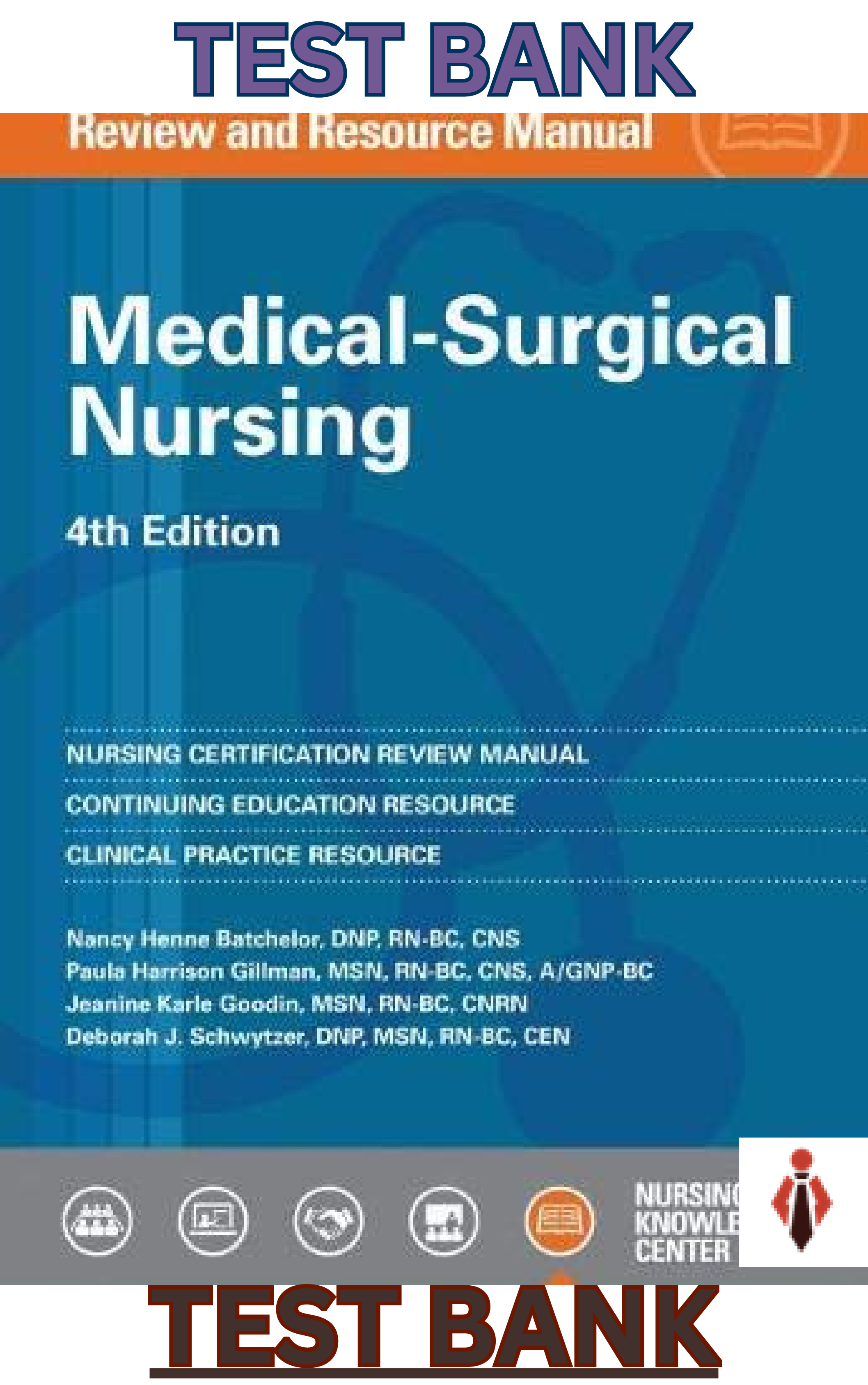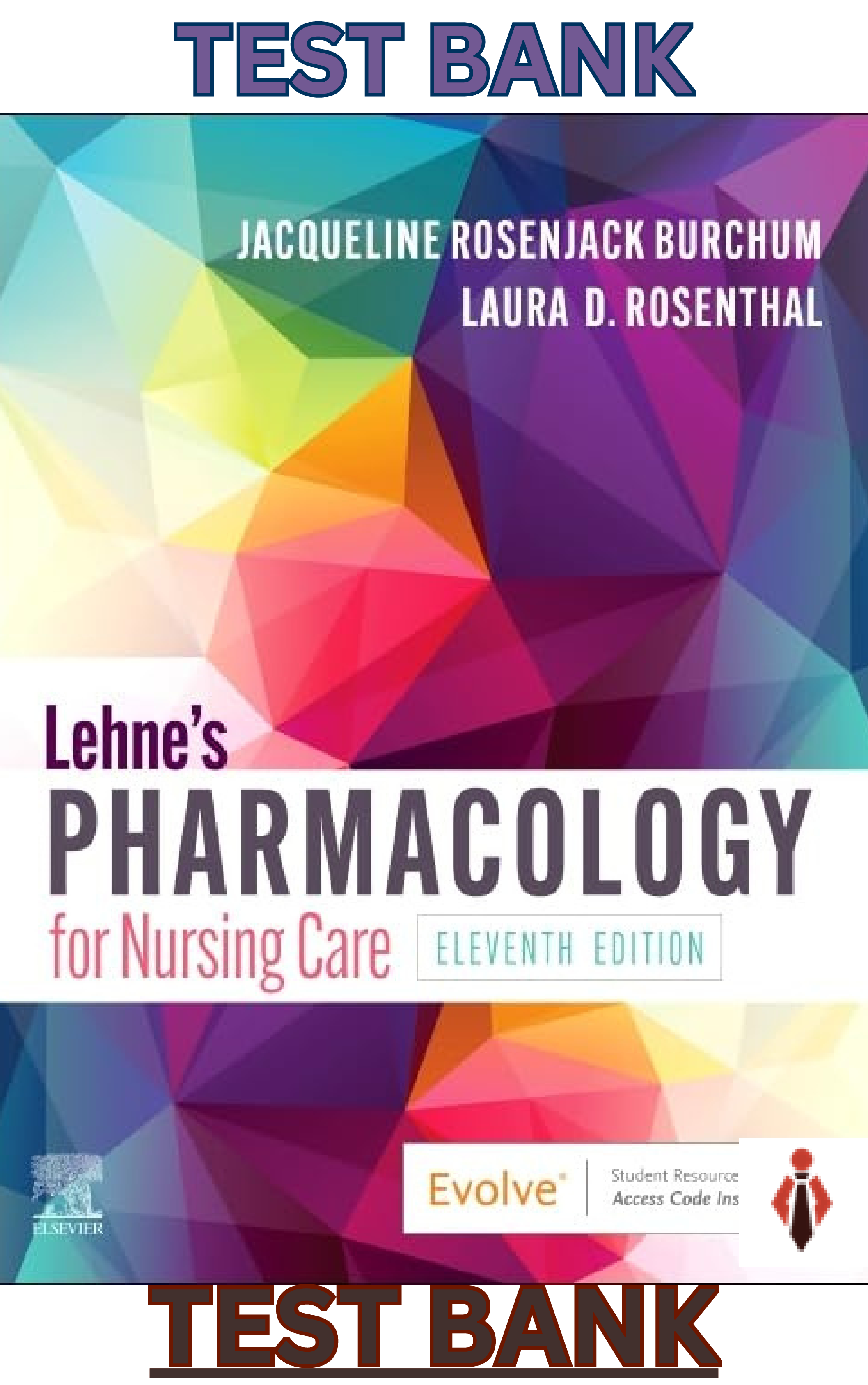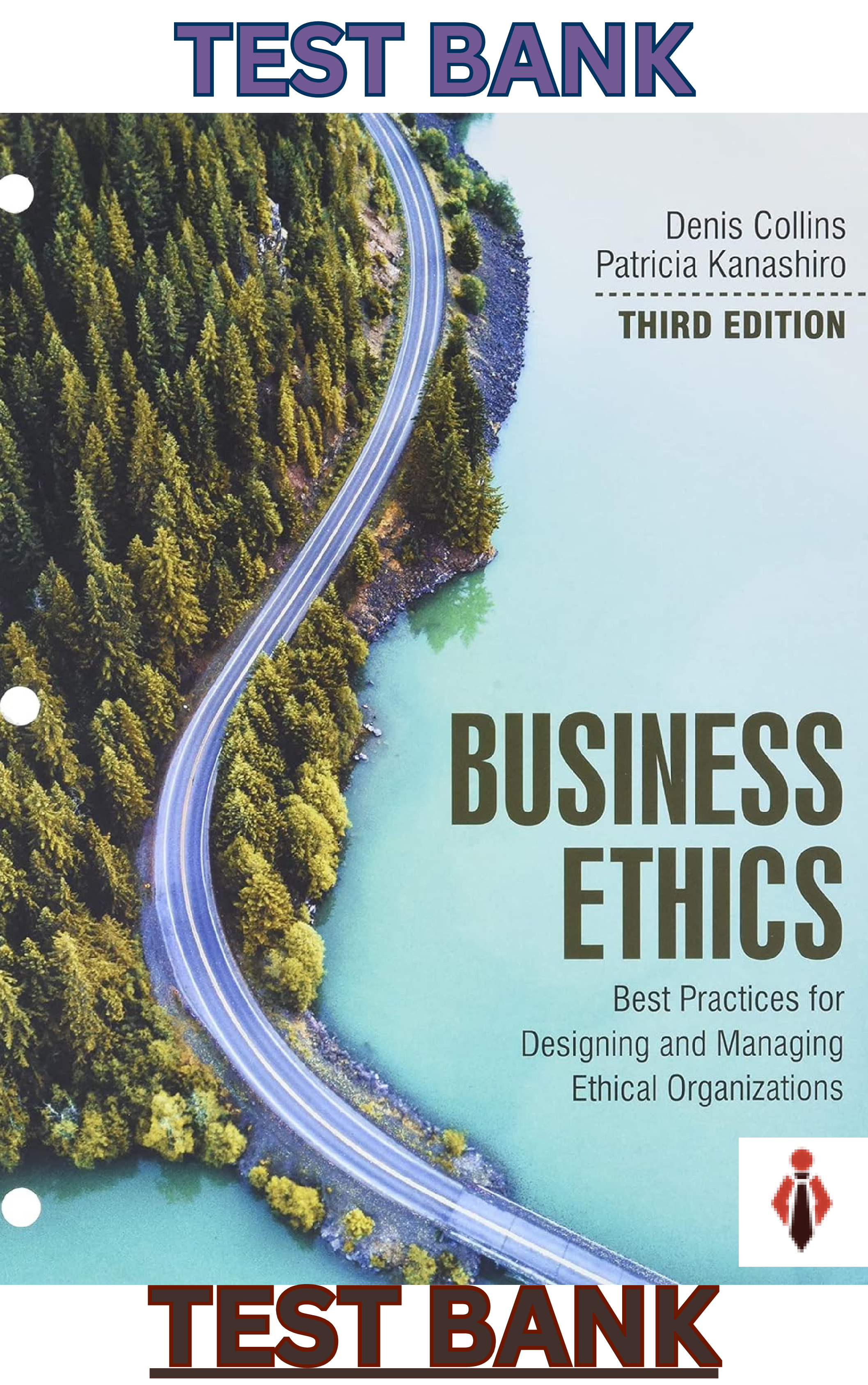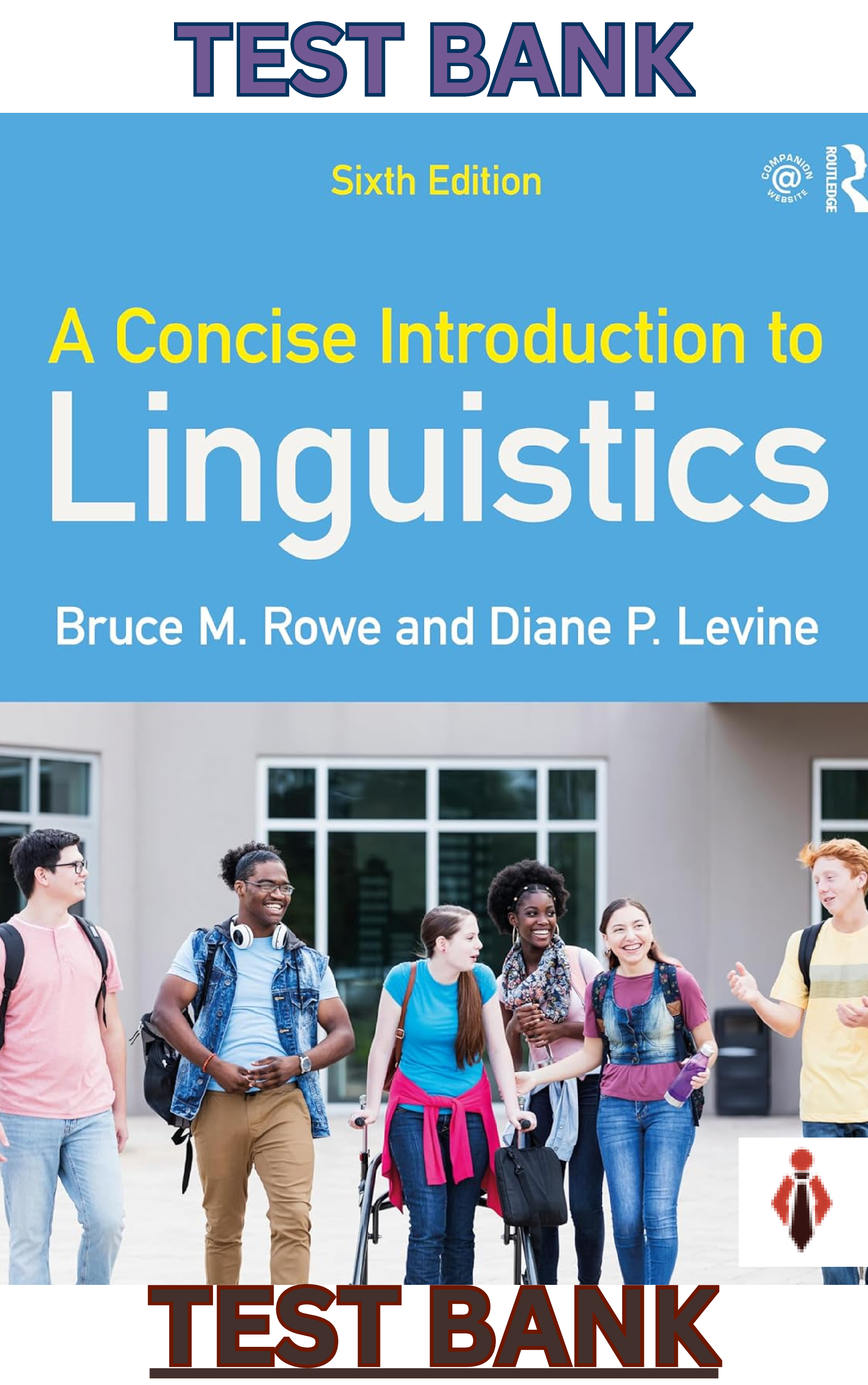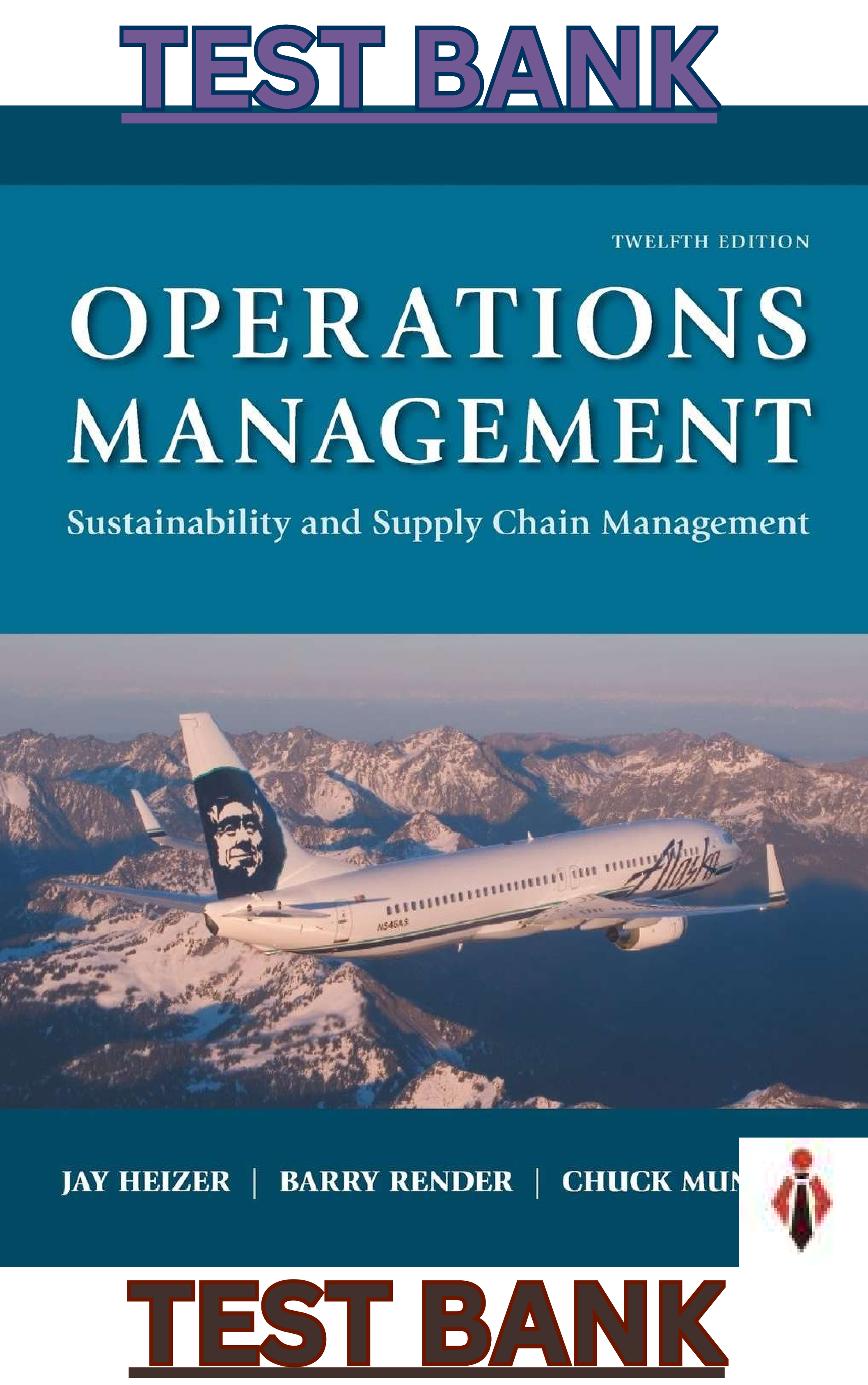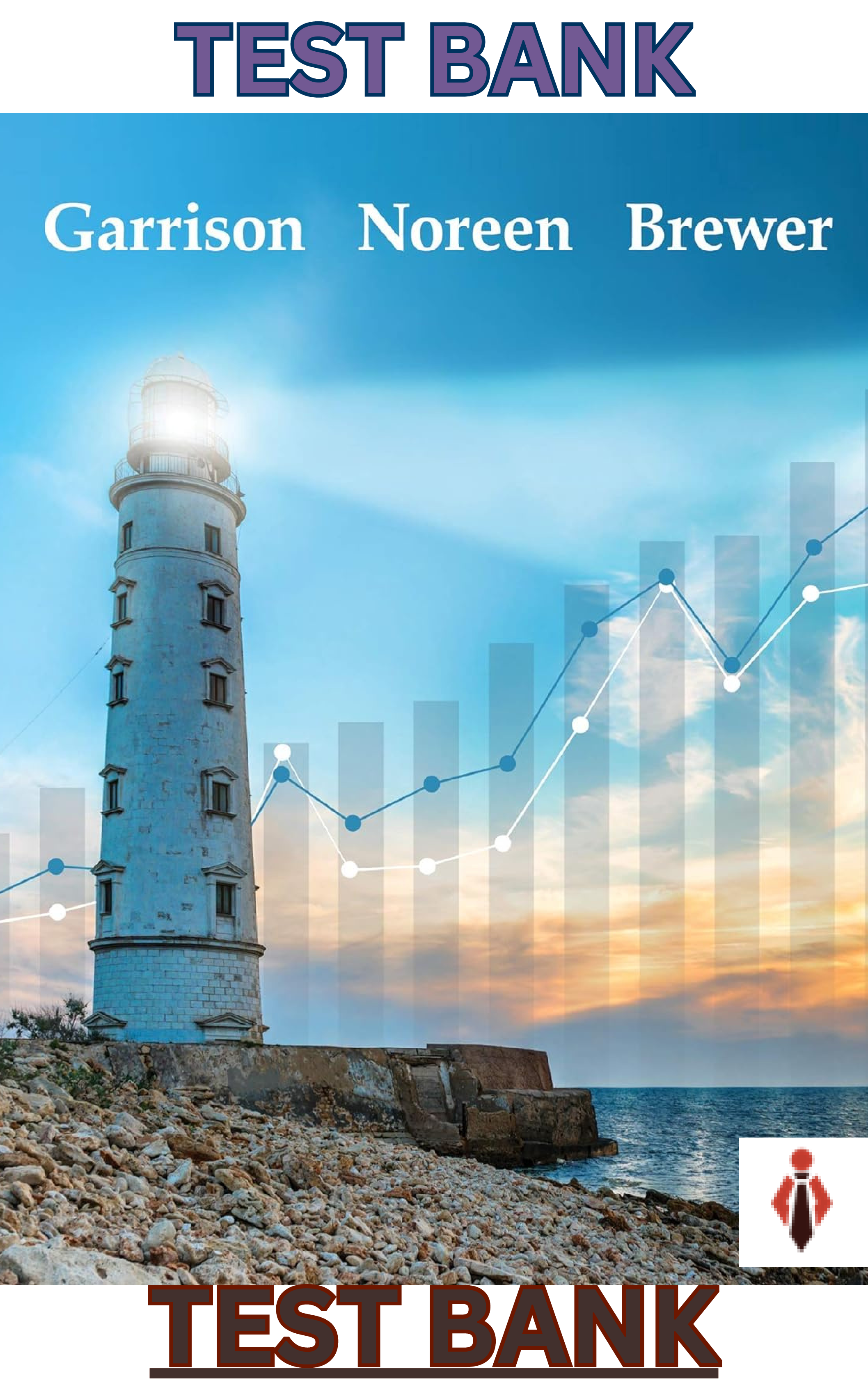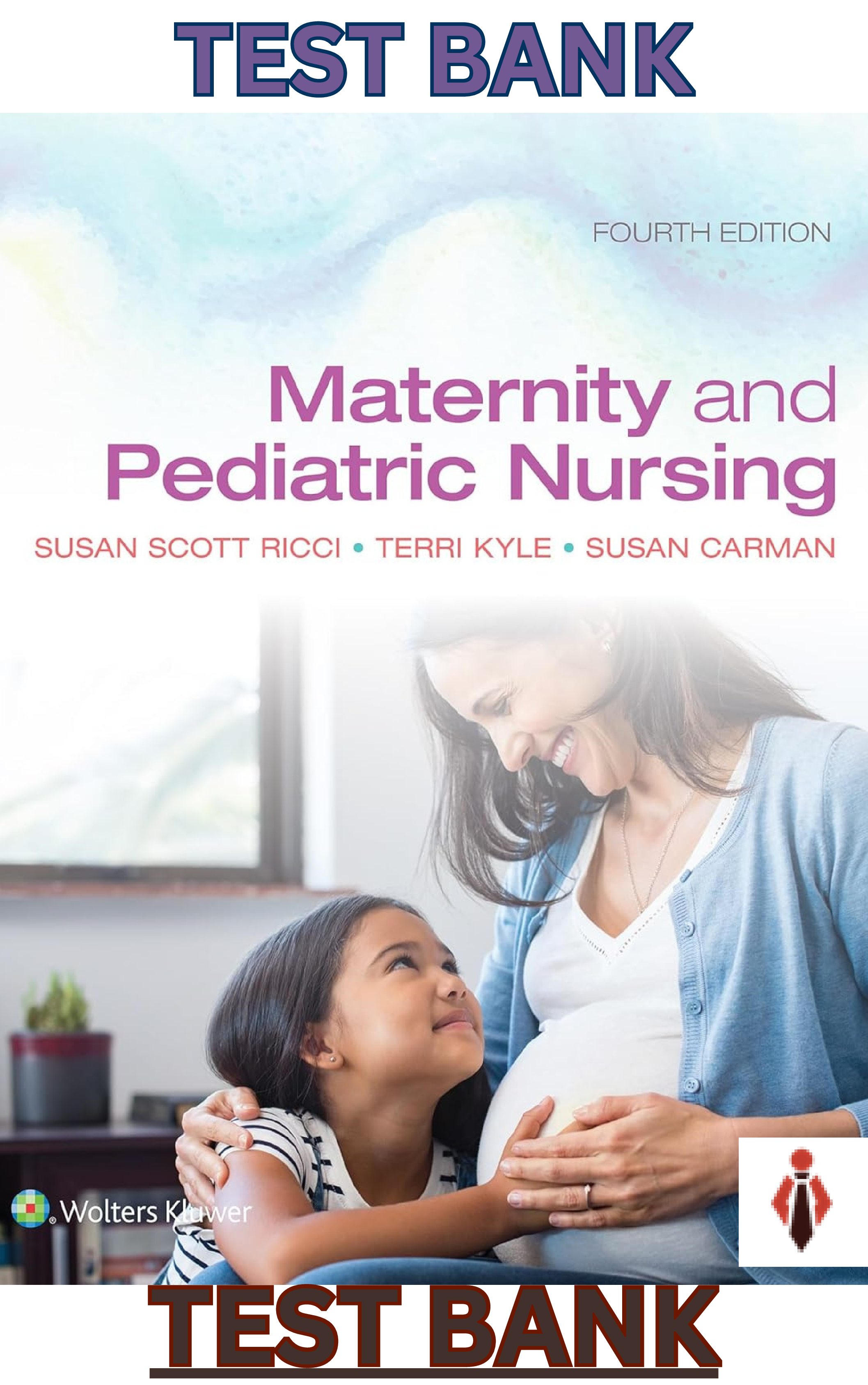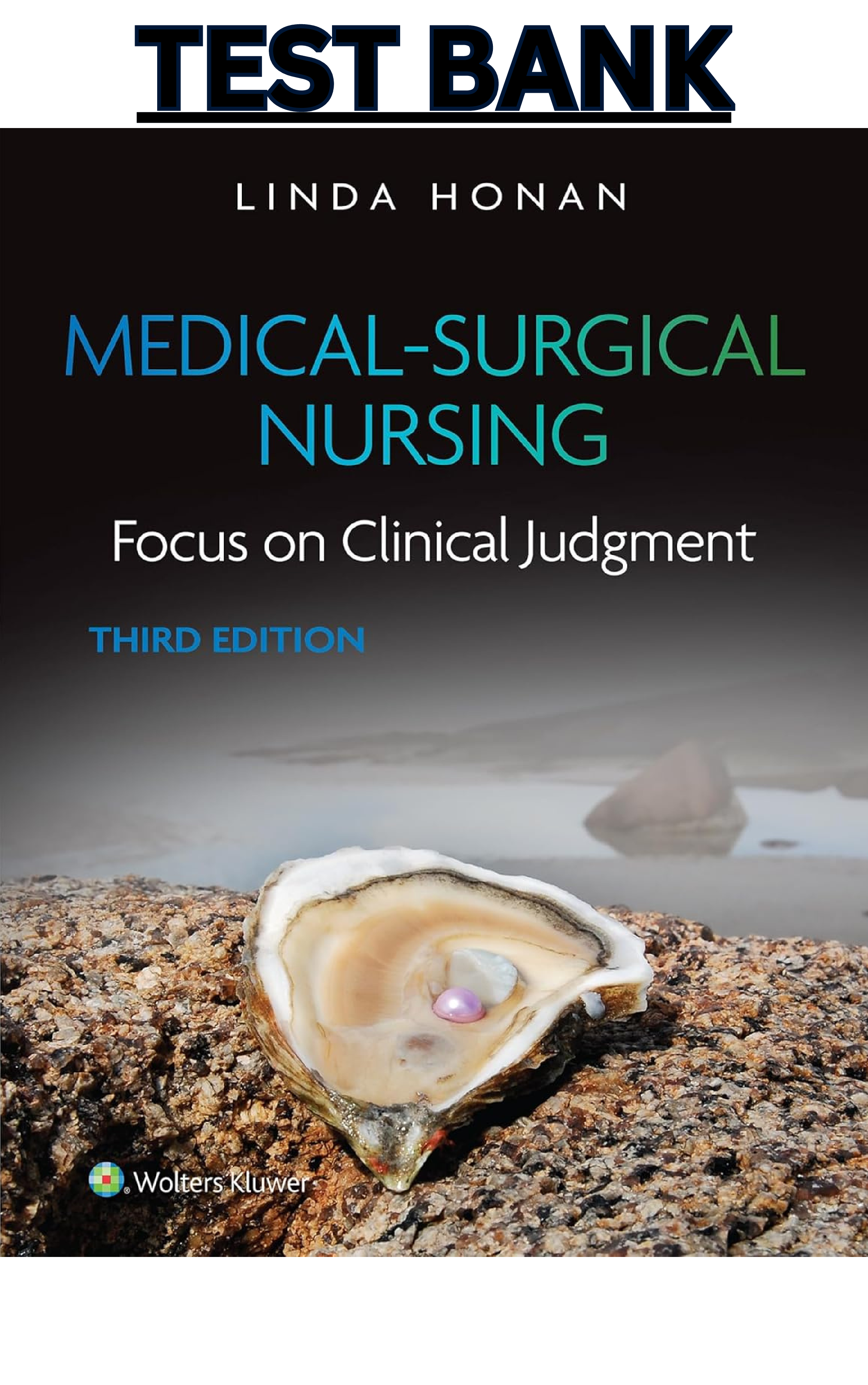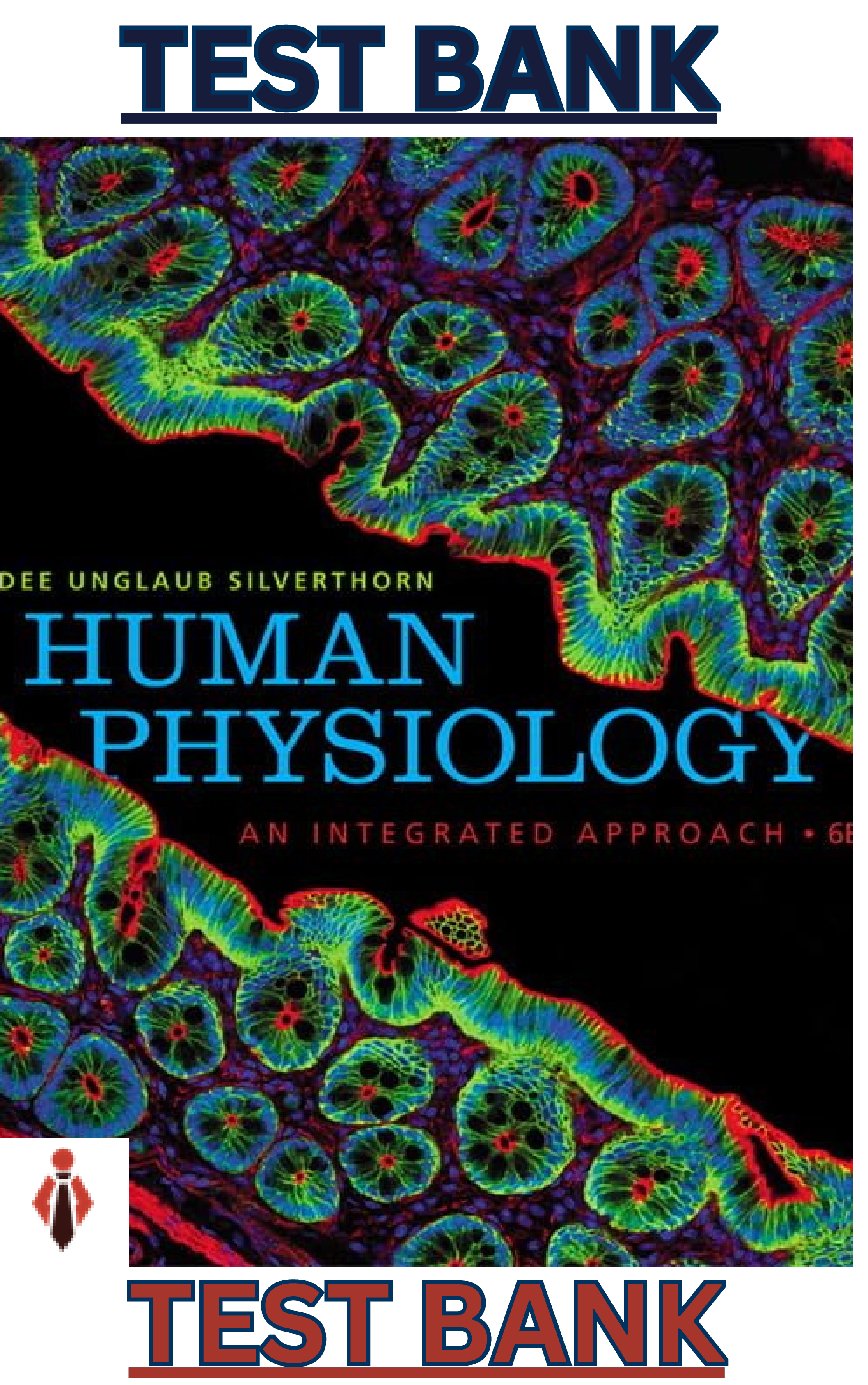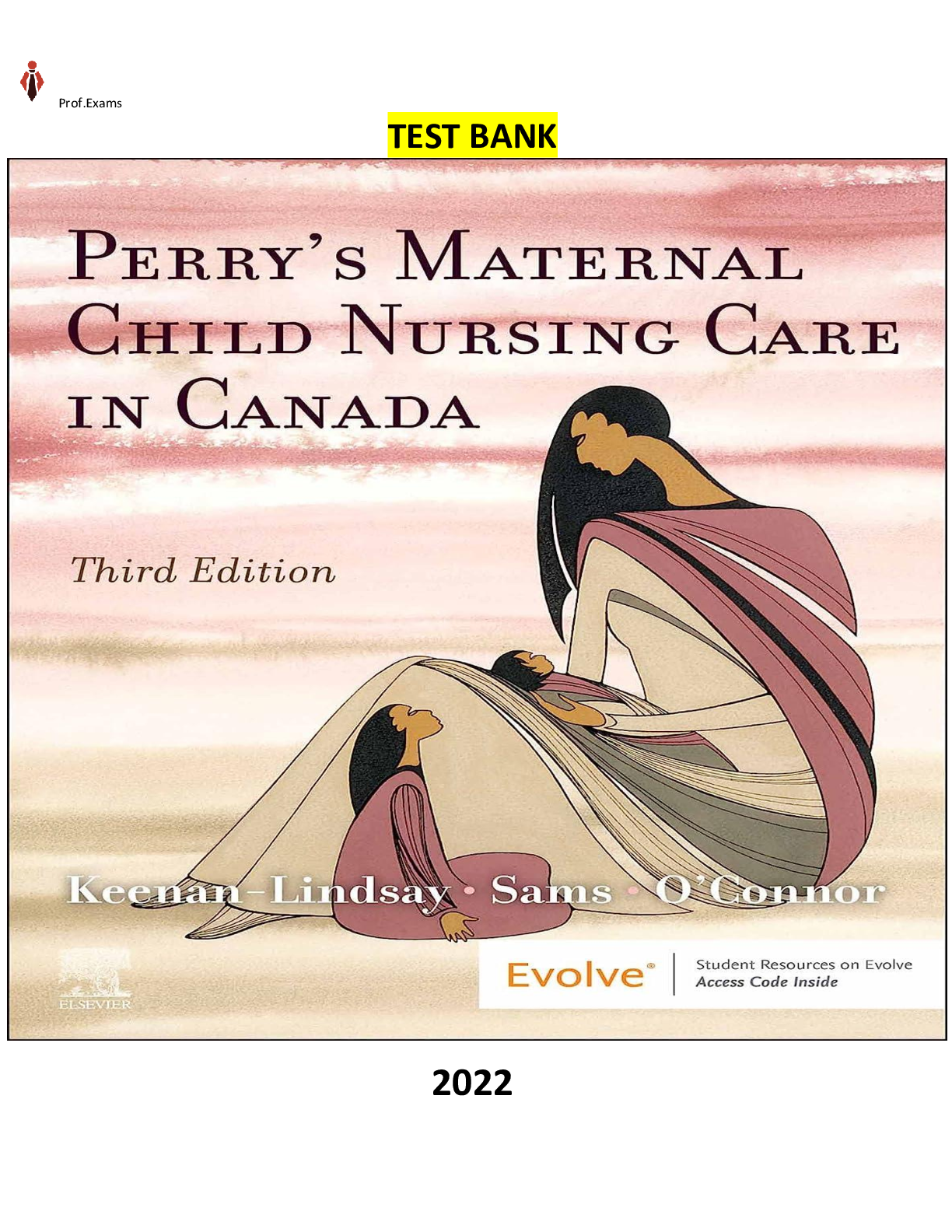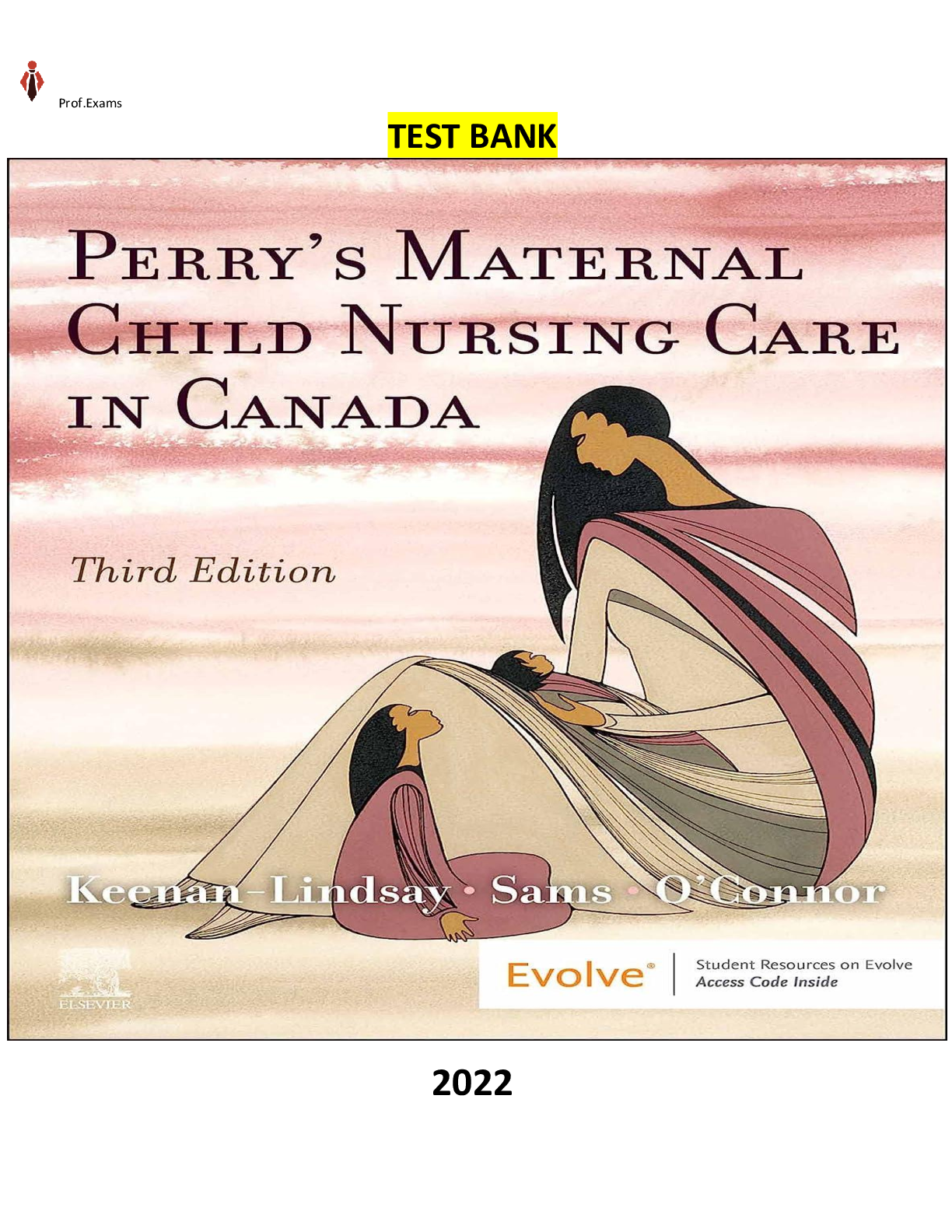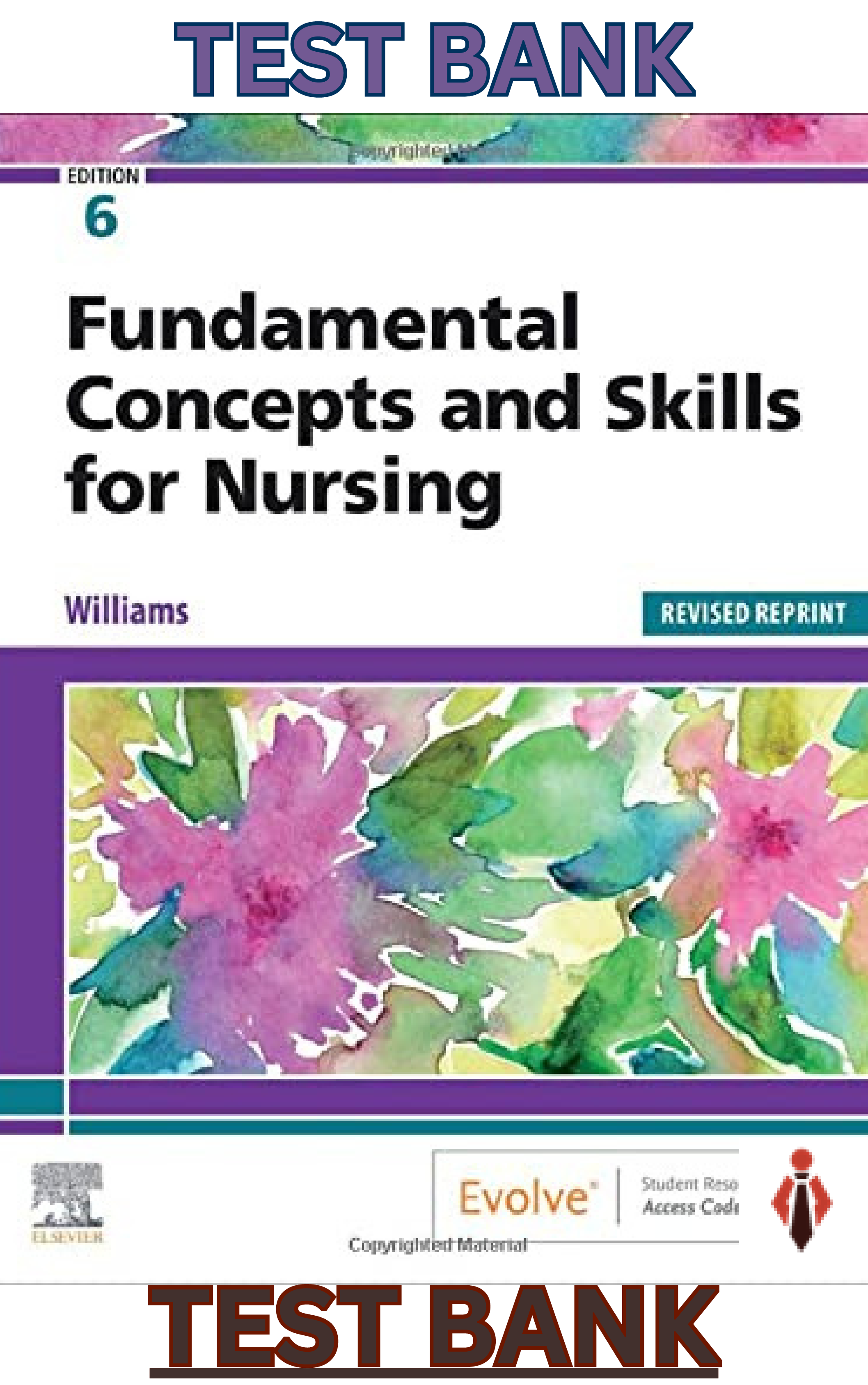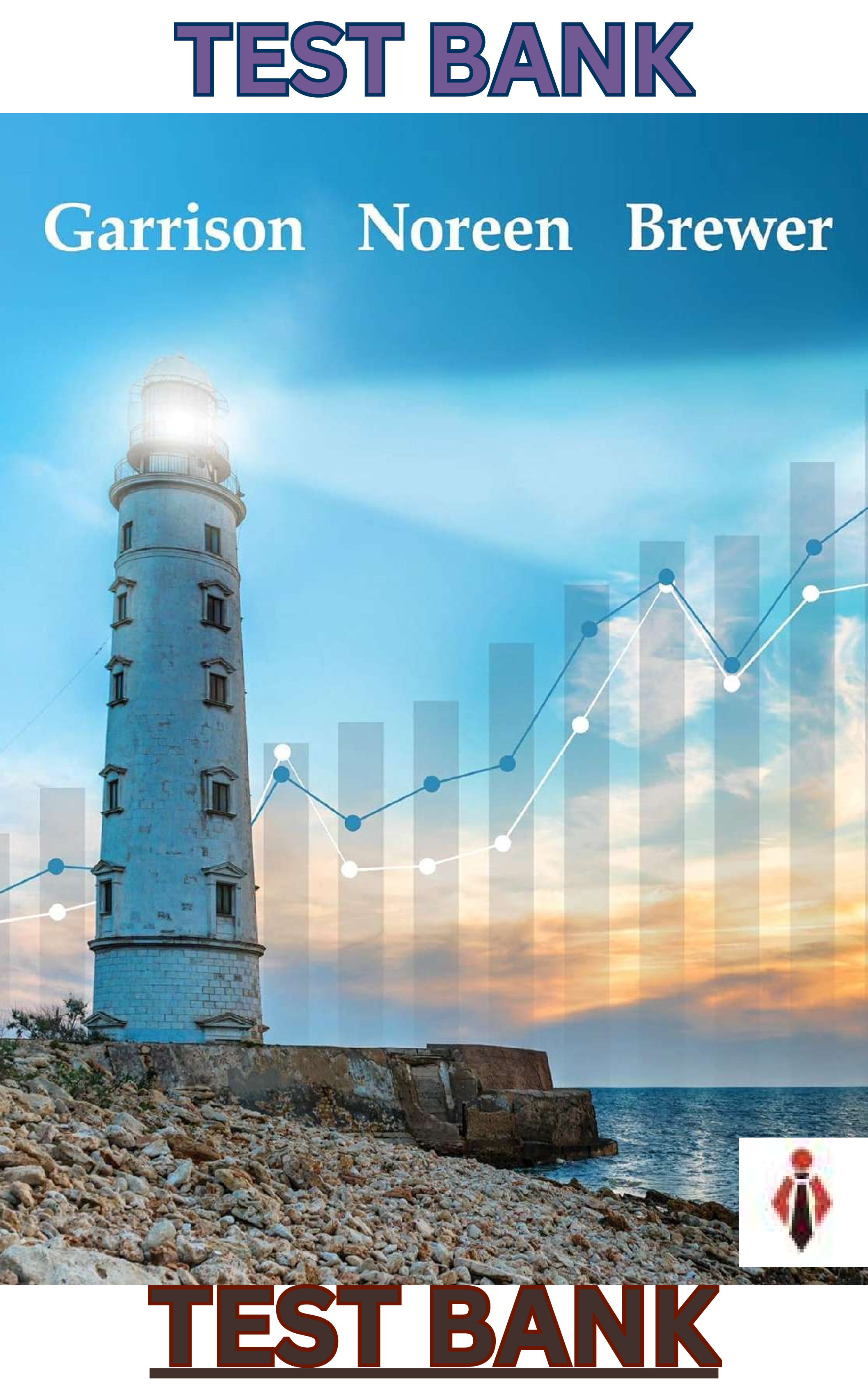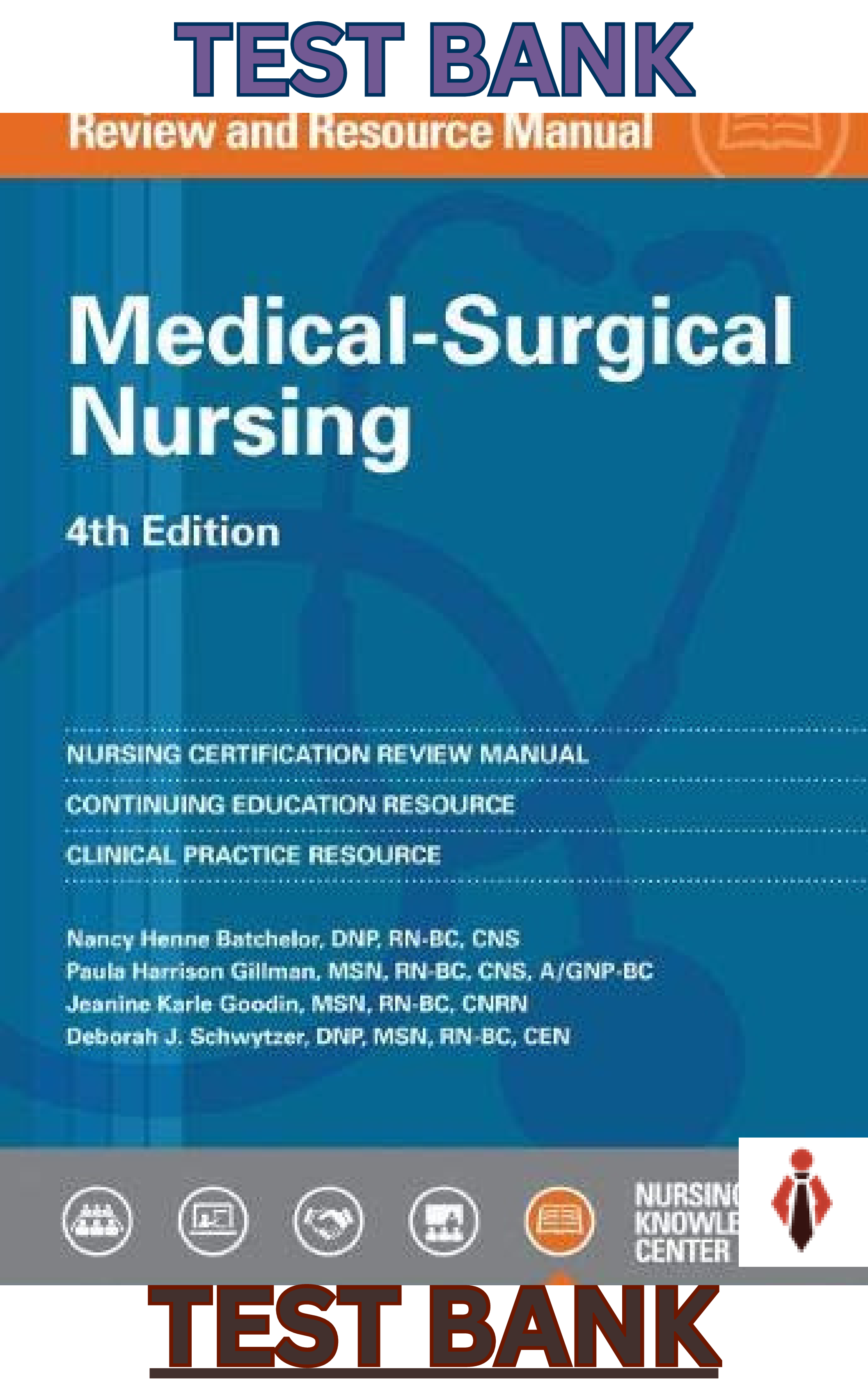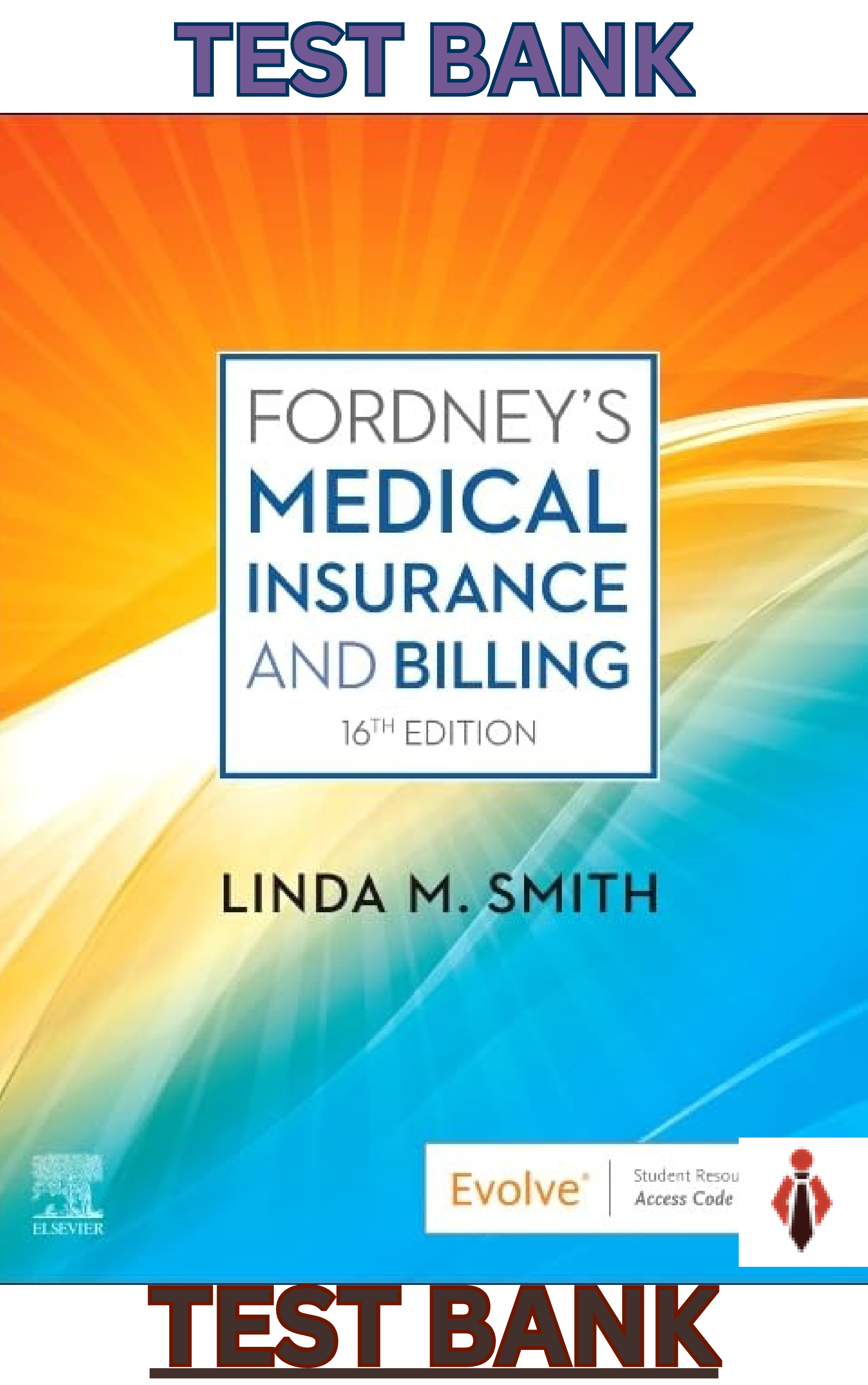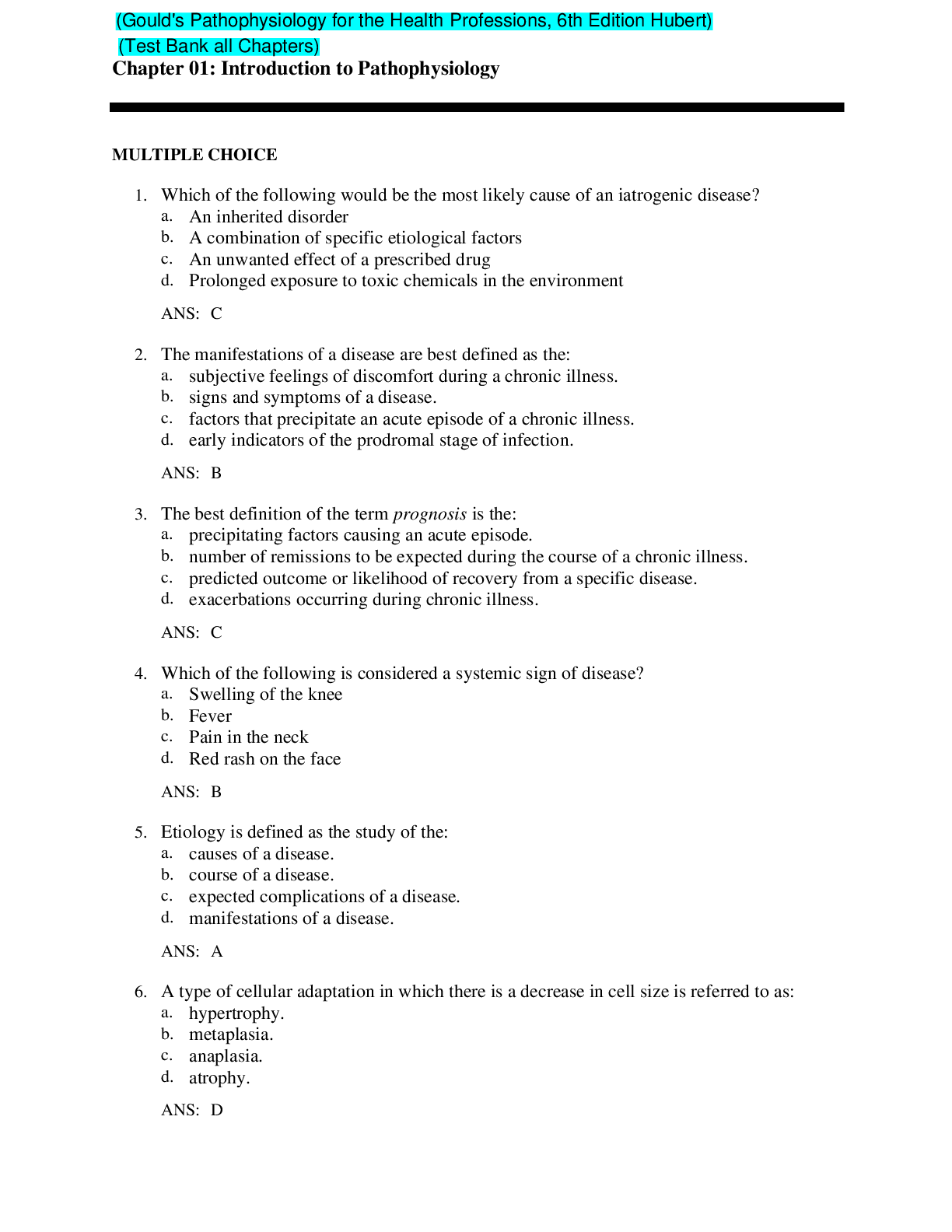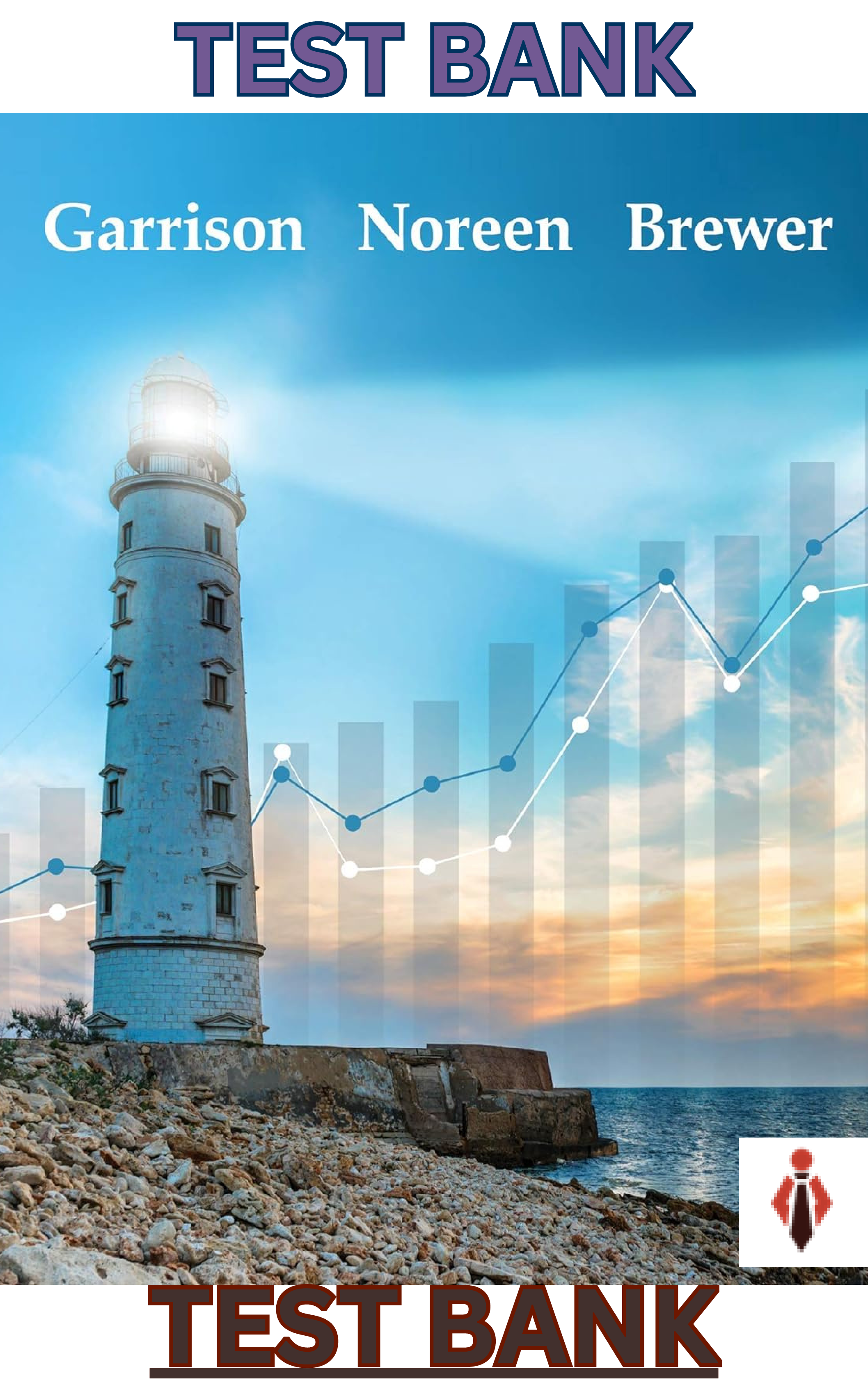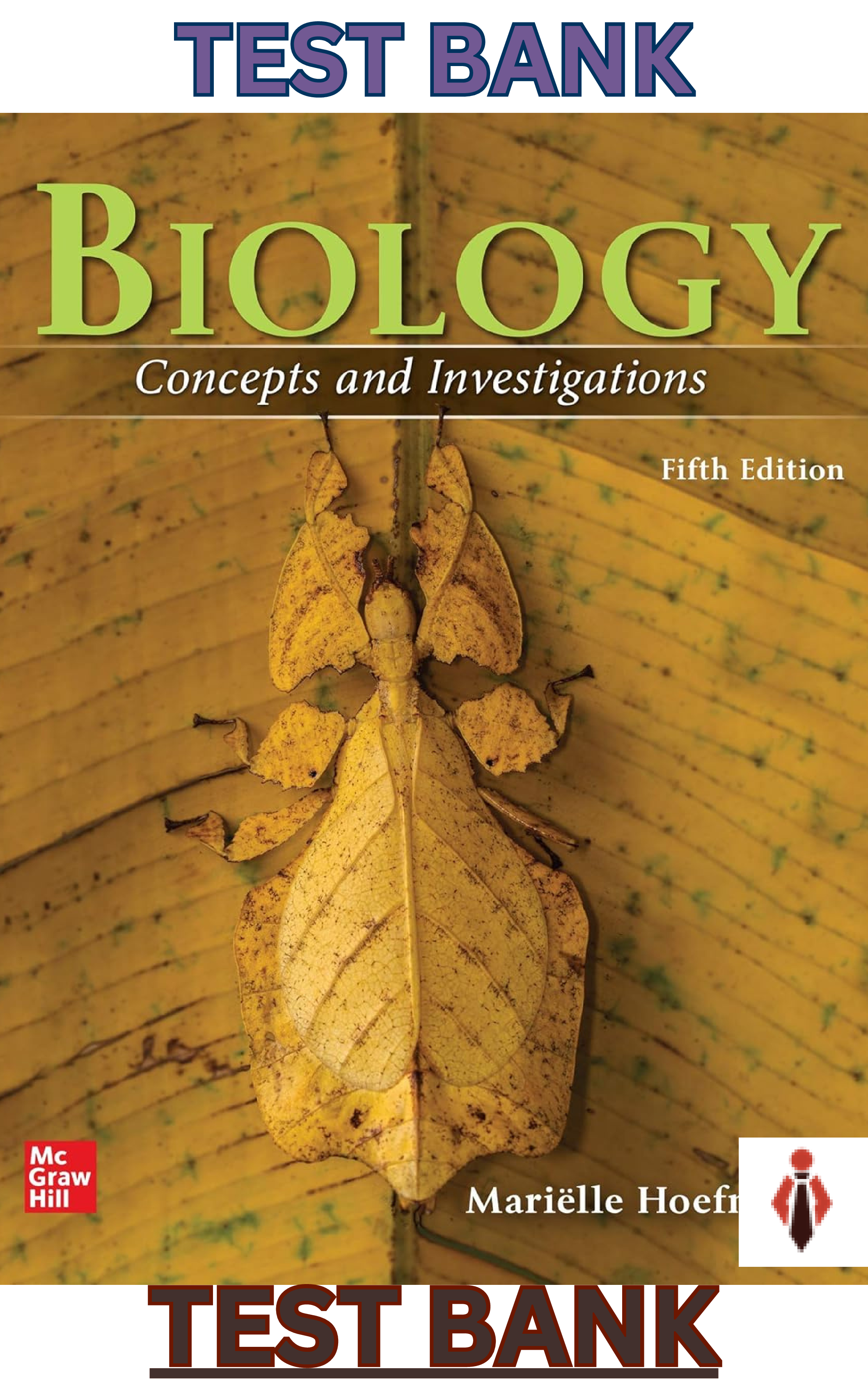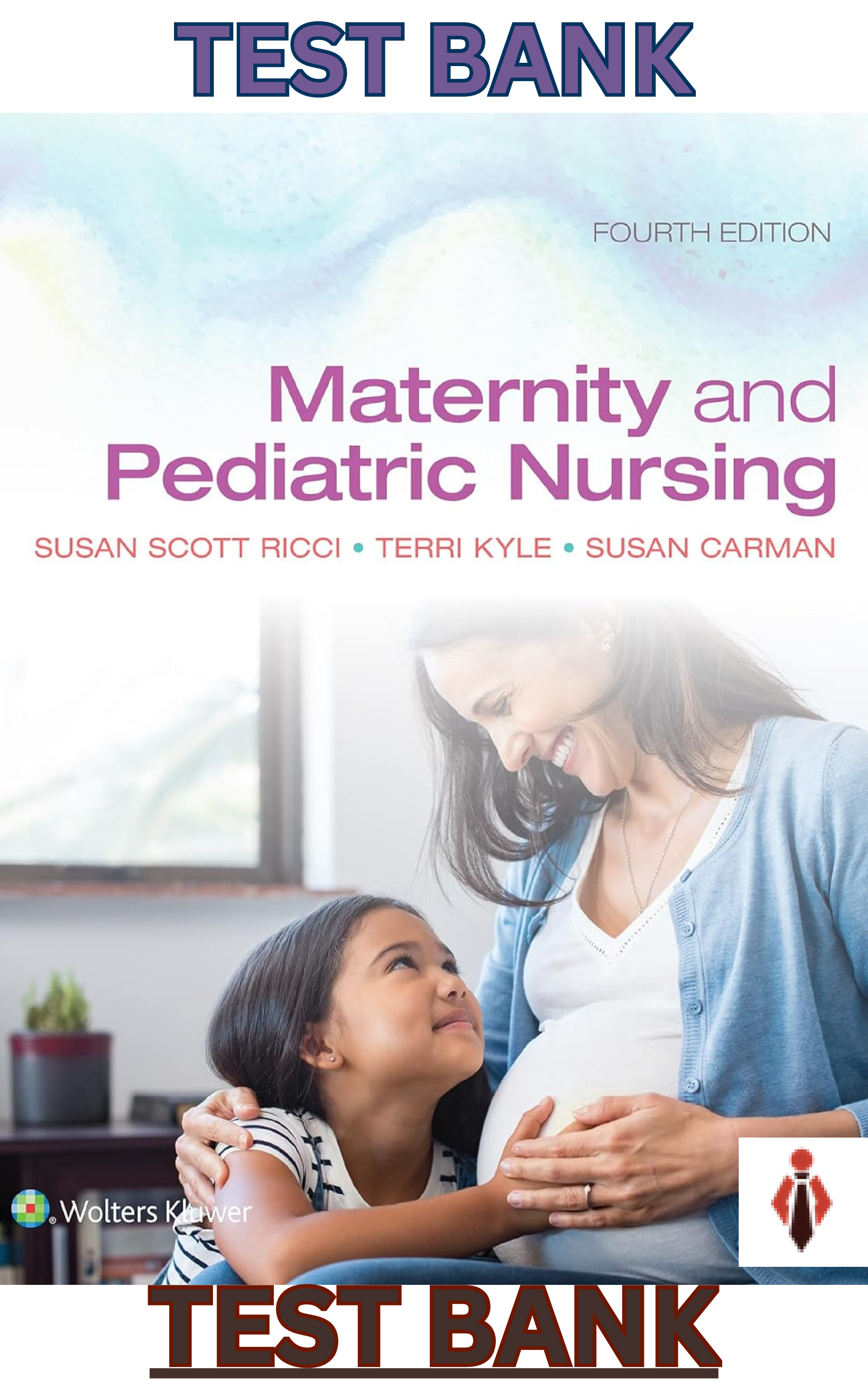Pathophysiology > TEST BANK > Gould's Pathophysiology for the Health Professions 7th Edition by Karin C. VanMeter & Robert J Huber (All)
Gould's Pathophysiology for the Health Professions 7th Edition by Karin C. VanMeter & Robert J Hubert - Complete, Elaborated and Latest(Test Bank)
Document Content and Description Below
Gould's Pathophysiology for the Health Professions 7th Edition by Karin C. VanMeter & Robert J Hubert - Complete, Elaborated and Latest(Test Bank) ISBN-10 032379288X ISBN-13 978-0323792882 ... TABLE OF CONTENTS Section I: Pathophysiology: Background and Overview 1. Introduction to Pathophysiology 2. Fluid, Electrolyte, and Acid-Base Imbalances 3. Introduction to Basic Pharmacology and Other Common Therapies 4. Pain Section II: Defense/Protective 5. Inflammation and Healing 6. Infection 7. Immunity Section III: Pathophysiology of Body Systems 8. Skin Disorders 9. Musculoskeletal Disorders 10. Blood and the Circulatory System 11. Lymphatic System Disorders 12. Cardiovascular System Disorders 13. Respiratory System Disorders 14. Neurological Disorders 15. Eyes, Ears and Other Sensory Organs 16. Endocrine Disorders 17. Digestive System Disorders 18. Urinary System Disorders 19. Reproductive System Disorders 20. Neoplasms and Cancer Section IV: Factors Contributing to Pathophysiology 21. Congenital and Genetic Disorders 22. Complications Due to Pregnancy 23. Complications Due to Adolescence 24. Complications Due to Aging Section V: Environmental Factors and Pathophysiology 25. Immobility and Associated Problems 26. Stress and Associated Problems 27. Substance Abuse and Associated Problems 28. Environmental Hazards and Associated Problems MULTIPLE CHOICE 1. Which of the following would be the most likely cause of an iatrogenic disease? a. An inherited disorder b. A combination of specific etiological factors c. An unwanted effect of a prescribed drug d. Prolonged exposure to toxic chemicals in the environment ANS: C REF: 6 2. The manifestations of a disease are best defined as the: a. subjective feelings of discomfort during a chronic illness. b. signs and symptoms of a disease. c. factors that precipitate an acute episode of a chronic illness. d. early indicators of the prodromal stage of infection. ANS: B REF: 6 3. The best definition of the term prognosis is the: a. precipitating factors causing an acute episode. b. number of remissions to be expected during the course of a chronic illness. c. predicted outcome or likelihood of recovery from a specific disease. d. exacerbations occurring during chronic illness. ANS: C REF: 7 4. Which of the following is considered a systemic sign of disease? a. Swelling of the knee b. Fever c. Pain in the neck d. Red rash on the face ANS: B REF: 6 5. Etiology is defined as the study of the: a. causes of a disease. b. course of a disease. c. expected complications of a disease. d. manifestations of a disease. ANS: A REF: 5 6. A type of cellular adaptation in which there is a decrease in cell size is referred to as: a. hypertrophy. b. metaplasia. c. anaplasia. d. atrophy. ANS: D REF: 8 NURSINGTB.COM GOULDS PATHOPHYSIOLOGY FOR THE HEALTH PROFESSIONS 6TH EDITION HUBERT TEST BANK NURSINGTB.COM 7. A change in a tissue marked by cells that vary in size and shape and show increased mitotic figures would be called: a. metaplasia. b. atrophy. c. dysplasia. d. hypertrophy. ANS: C REF: 8 8. A deficit of oxygen in the cells usually due to respiratory or circulatory problems is called: a. apoptosis. b. ischemia. c. hypertrophy. d. necrosis. ANS: B REF: 9 9. When a group of cells in the body dies, the change is called: a. ischemia. b. gangrene. c. hypoxia. d. necrosis. ANS: D REF: 10 10. Rigorous weight lifting/body building regimens may result in the skeletal muscle cells undergoing: a. hypertrophy. b. dysplasia. c. atrophy. d. regeneration. ANS: A REF: 8 11. The term cancer refers to: a. dysplasia. b. hyperplasia. c. metaplasia. d. malignant neoplasm. ANS: D REF: 9 12. To which of the following does the term apoptosis refer? a. Increased rate of mitosis by certain cells b. Ischemic damage to cells c. Liquefaction of necrotic tissue d. Preprogrammed cell self-destruction ANS: D REF: 9 13. Which of the following statements is TRUE? a. Alteration of DNA does not change cell function. NURSINGTB.COM GOULDS PATHOPHYSIOLOGY FOR THE HEALTH PROFESSIONS 6TH EDITION HUBERT TEST BANK NURSINGTB.COM b. Damaged cells may be able to repair themselves. c. All types of cells die at the same rate. d. Mild ischemia causes immediate cell death. ANS: B REF: 10 14. Caseation necrosis refers to an area where: a. cell proteins have been denatured. b. cell are liquefied by enzymes. c. dead cells form a thick cheesy substance. d. bacterial invasion has occurred. ANS: C REF: 10 15. Routine application of sun block to skin would be an example of: a. an iatrogenic cause of cancer. b. a preventive measure. c. a precipitating factor. d. a predisposing condition. ANS: B REF: 6 16. A circumstance that causes a sudden acute episode of a chronic disease to occur is termed: a. latent stage. b. predisposing factor. c. incidence. d. precipitating factor. ANS: D REF: 7 17. The term homeostasis refers to: a. the causative factors in a particular disease. b. maintenance of a stable internal environment. c. a condition that triggers an acute episode. d. a collection of signs and symptoms. ANS: B REF: 2 18. Which term is used to describe a new and secondary or additional problem that arises after the original disease has been established? a. Symptoms b. Occurrence c. Manifestations d. Complication ANS: D REF: 7 19. Pathophysiology involves the study of: a. the structure of the human body. b. the functions of various organs in the body. c. functional or structural changes resulting from disease processes. d. various cell structures and related functions. NURSINGTB.COM GOULDS PATHOPHYSIOLOGY FOR THE HEALTH PROFESSIONS 6TH EDITION HUBERT TEST BANK NURSINGTB.COM ANS: C REF: 2 20. Which of the following is the best definition of epidemiology? a. The science of tracking the occurrence and distribution of diseases b. The relative number of deaths resulting from a particular disease c. Identification of a specific disease through evaluation of signs and symptoms d. The global search for emerging diseases ANS: A REF: 7 21. Which of the following can cause cell injury or death? 1. Hypoxia 2. Exposure to excessive cold 3. Excessive pressure on a tissue 4. Chemical toxins a. 1, 2 b. 2, 4 c. 1, 3, 4 d. 1, 2, 3, 4 ANS: D REF: 9 22. All of the following are part of the Seven Steps to Health EXCEPT: a. follow cancer screening guidelines. b. use sun block agents whenever exposed. c. participate in strenuous exercise on a regular daily basis. d. choose high fiber, lower fat foods. ANS: C REF: 2 23. The term disease refers to: a. the period of recovery and return to a normal healthy state. b. a deviation from the normal state of health and function. c. the treatment measures used to promote recovery. d. a basic collection of signs and symptoms. ANS: B REF: 2 24. A collection of signs and symptoms, often affecting more than one organ or system, that usually occur together in response to a certain condition is referred to as a (an): a. acute disease. b. multiorgan disorder. c. syndrome. d. manifestation. ANS: C REF: 7 25. All of the following statements are correct about cell damage EXCEPT: a. The initial stage of cell damage often causes an alteration in metabolic reactions. b. If the factor causing the damage is removed quickly, the cell may be able to recover and return to its normal state. c. If the noxious factor remains for an extended period of time, the damage becomes NURSINGTB.COM GOULDS PATHOPHYSIOLOGY FOR THE HEALTH PROFESSIONS 6TH EDITION HUBERT TEST BANK NURSINGTB.COM irreversible and the cell dies. d. Initially, cell damage does not change cell metabolism, structure, or function. ANS: D REF: 9 26. Which of the following conditions distinguishes double blind studies used in health research? a. Neither the members of the control group or the experimental group nor the person administering the treatment knows who is receiving the experimental therapy. b. Both groups of research subjects and the person administering the treatment know who is receiving the experimental therapy. c. The research subjects do not know, but the person administering the treatment knows who is receiving placebo or standard therapy. d. Only members of the control group know they are receiving standard therapy. ANS: A REF: 3 | 4 27. If the data collected from the research process confirm that the new treatment has increased effectiveness and is safe, this is called: a. the placebo effect. b. evidence-based research. c. blind research studies. d. approval for immediate distribution. ANS: B REF: 4 28. A short-term illness that develops very quickly with perhaps a high fever or severe pain is called: a. acute. b. latent. c. chronic. d. manifestation. ANS: A REF: 6 29. The term prognosis refers to the: a. period of recovery and return to a normal state. b. expected outcome of the disease. c. mortality and morbidity rates for a given population. d. typical collection of signs and symptoms. ANS: B REF: 7 30. When prolonged ischemia occurs to an area of the heart, the resulting damage is referred to as: a. atrophy. b. liquefactive necrosis. c. apoptosis. d. infarction. ANS: D REF: 10 31. During the evaluation process for a new therapy’s effectiveness and safety, a double blind study may be conducted during: a. the first stage. Gould Pathophysiology Health Professions 7th Edition by Karin C. VanMeter Robert J Hubert Complete, Elaborated and Latest Test Bank.. [Show More]
Last updated: 9 months ago
Preview 1 out of 214 pages
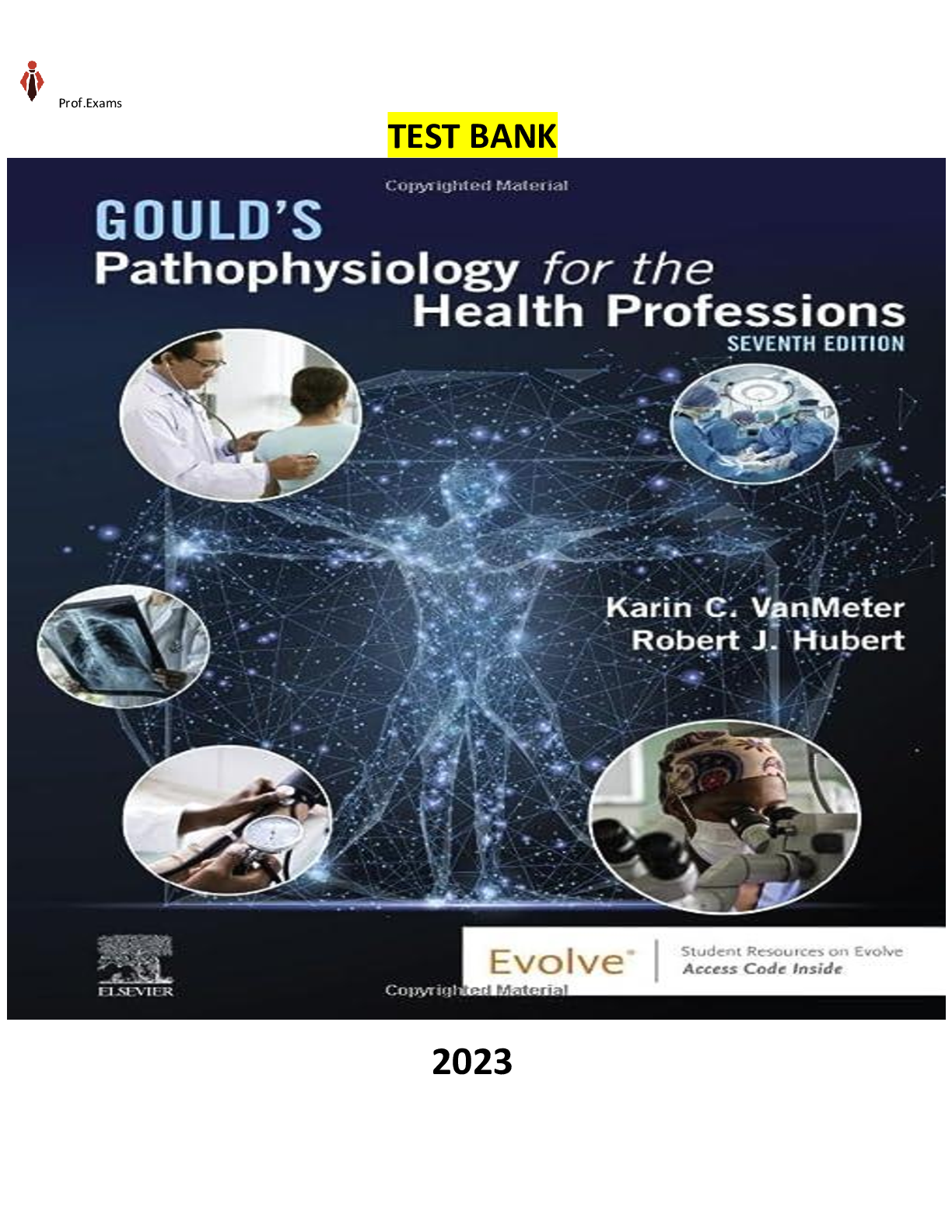
Reviews( 0 )
Document information
Connected school, study & course
About the document
Uploaded On
Jul 30, 2023
Number of pages
214
Written in
Additional information
This document has been written for:
Uploaded
Jul 30, 2023
Downloads
0
Views
62

